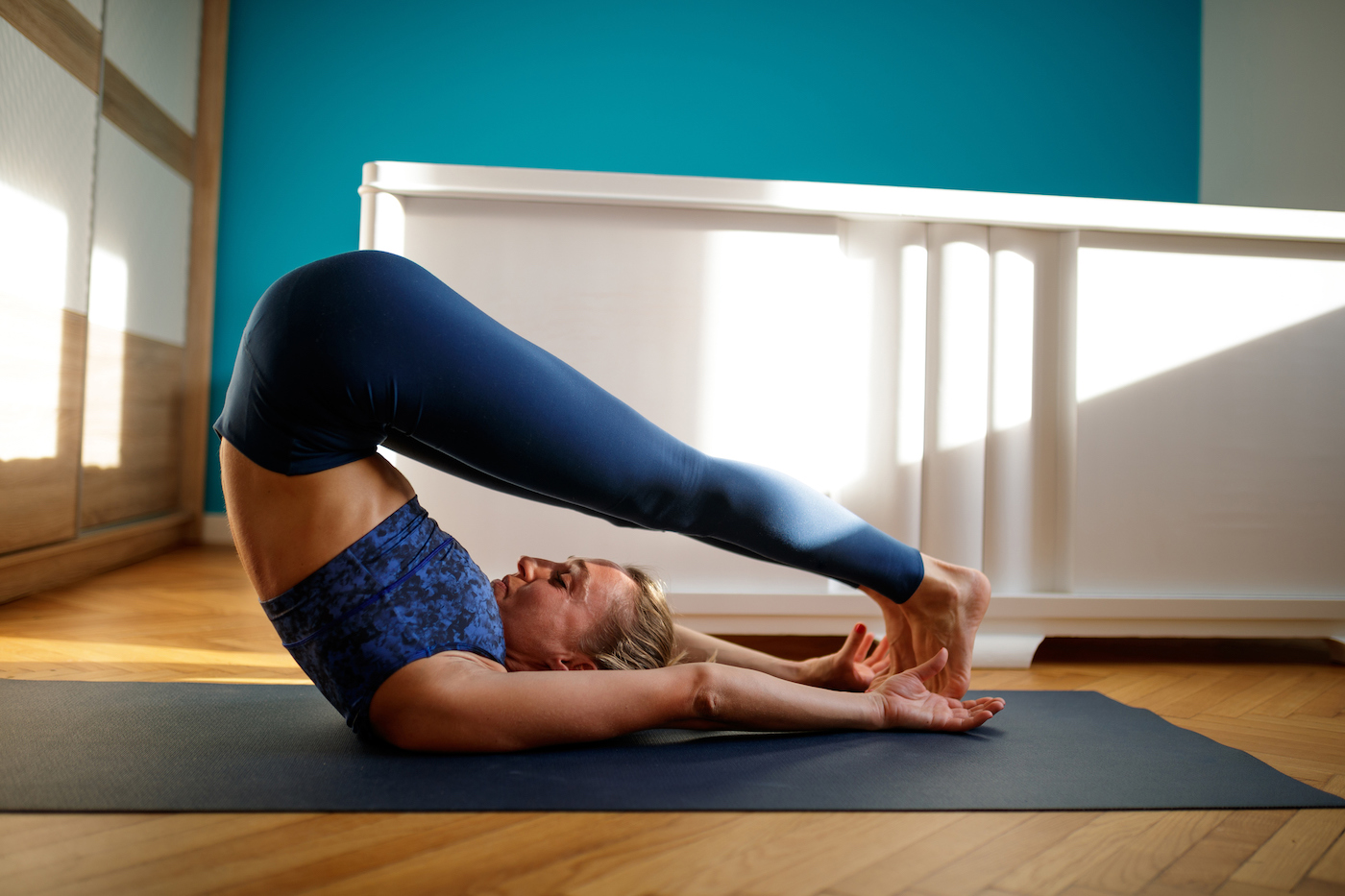
Yoga and sleep go handin' hand. If you want to get good sleep, practice it before bed. Practicing yoga before bed will help you to relax and fall asleep more quickly. Yoga can improve your overall health and wellbeing. Yoga, unlike other types of exercise, doesn't require a partner in the bed. This makes it the ideal partner for sleeping.
Yoga can be a great way to sleep. Bikram Yoga has many benefits for sleep. It can lower your risk of getting insomnia and can even help to get more restful sleep. Kundalini Yoga also offers meditation and long breathing. Whether you practice a regular yoga practice or just do it occasionally, it will likely help you fall asleep. You can do little but effective yoga before going to sleep. It's also a great way for you to get your day started.

Yoga has many benefits, including the ability to improve your sleep quality. You can focus on the poses and block out distractions so you don't get distracted before you go to bed. The Child's pose, for instance, allows you to concentrate on your inner self and calms the mind. The parasympathetic nervous systems relaxes your brain and body by activating the Child's Pose. This will help you fall asleep more easily at night.
Analyzing the effects of yoga on sleep, the authors determined the effectiveness of yoga. Participants who did yoga before bedtime had better subjective sleep, better habitual sleep efficiency, better quality sleep overall, and better sleep quality. However, the daytime dysfunction scores of participants were not significantly different. These studies suggest that yoga may have a stronger impact on sleep than we believe. If you have been looking for a solution, you can find it in Yoga and Sleep.
Evidence has shown a direct relationship between yoga and older adults, in addition to its effects on sleep quality. Yoga helps the body adapt and overcome insomnia, which is a common condition that comes with age. It allows seniors to live a more fulfilling life and enjoy greater rest quality. Even better, yoga can be done before bed to improve memory and learning skills. Yoga can be a great way to help your body adapt to daily stresses.

Even though Yoga does not have immediate effects, the effects are still significant. Insomnia can impact our quality of lives and lead to major health problems. Sleep deprivation can also lead to heart disease, diabetes, and other serious illnesses. If you are not getting enough sleep, you may not be able to concentrate on work. The stress that causes such disorders can interfere with our daily tasks. Fortunately, the benefits of Yoga and sleep are both simple and effective.
FAQ
How often should you exercise per week?
It all depends on how much time and what kind of exercise you like. It's a good idea to do moderate-intensity aerobic exercises 3 - 5 times per week. It's important that you don't overdo it. You will get the maximum benefits from your workouts if you do not exercise consistently.
Which exercises work best for you?
It all depends upon your fitness goals. Some people concentrate on endurance activities such running, cycling, swimming. Others like lifting weights or using resistance band. There are many types and styles of exercise available today. Choose an option that suits your lifestyle.
Do I need to exercise every morning?
No! Get at least 30 minutes of moderate-intensity physical activity 5 days a week. It means you need to exercise hard enough or walk fast enough that you are slightly out-of- breath.
How many calories do I need to eat each day?
The exact amount varies depending on the person. The average is 2000 - 2500 calories per day. The factors that determine how many calories are needed for you include your gender, age, height, activity level, lifestyle, and gender.
What's a good workout plan for 7 days?
A seven-day exercise program should consist of three days per week of cardiovascular training (running, biking, swimming), two strength exercises (using free weights, weight machines), and one flexibility/core workout (yoga, Pilates). Each activity should be performed at least once each week. Each session should not last more than 45 minutes.
Cardiovascular Exercise: Running, Biking, Swimming
It is important to complete at least 60 minutes of cardio per week. For best results, aim for 75 minutes per week. Cardio exercises can help improve blood flow and stimulate muscle growth.
Strength Training
Cardio exercises focus on the heart and lungs while strength training targets muscles and bones. Strength training can help you burn calories even when you're not working out.
Flexibility & Core Workouts
You can strengthen your entire body by strengthening flexibility and core exercises. Both yoga and Pilates can be great choices.
How to Build Muscles Fast
Fast muscle building is possible by eating healthy foods and regularly lifting weights.
Mornings are the best time to workout.
Try exercises like squats and bench presses.
Use different weight training techniques and drink plenty water throughout the day.
Statistics
- 10 pounds in a month is likely during a lean bulking phase, especially for beginners. (muscleandstrength.com)
- According to the American Heart Association, blood pressure should be checked at least once every two years, beginning at age 20. (my.clevelandclinic.org)
- The PRS enabled risk stratification for overall prostate cancer and lethal disease with a four-fold difference between men in the highest and lowest quartiles (HR, 4.32; 95% confidence interval [CI], 3.16-5.89). (pubmed.ncbi.nlm.nih.gov)
- According to the American Academy of Dermatology (AAD), men over 50 are at a heightened risk of developing it. (healthline.com)
- An estimated calorie range for moderately active adult males falls between 2,200 to 2,800 calories per day, depending on age. (eatright.org)
External Links
How To
What food is the healthiest for men?
Five servings of fruit and vegetables should be consumed daily by men. They should limit their intake of red meat, and avoid fast food.
Fruits and veggies are packed with antioxidants that protect against cancer, cardiovascular disease, and other diseases.
Vegetables include broccoli, cauliflower, carrots, spinach, tomatoes, peppers, cucumbers, lettuce, mushrooms, etc.
Also, beans and peas are rich in protein and fiber.
Omega-3 fatty acids are abundant in nuts and seeds. Omega-3 fatty acid is essential for the brain and hormone production.
Fish is another excellent source of omega-3s. More mercury is found in fish than any other meats. However, fish liver oil does contain fewer toxins.
Omega-6s found in vegetable oils like corn, soybean, safflower, sunflower, and cottonseed oils are necessary for average growth and development.
Poultry is a good source of lean protein. The best meat to eat is chicken breast.
Lean beef is low on saturated fats, cholesterol, and other harmful substances. You should limit your intake of red meat as it can increase your risk for prostate cancer.
Avoid processed meats such as sausage and hot dogs. These foods contain added nitrates, which can lead to cancer.
It's obvious that exercise is vital for your overall health. Even if you exercise regularly, what do you do? Is there anything else you can do to maintain or improve your physical condition?
The answer is yes To get the most from your workouts, there are several things you can do. Here are some tips to help you maximize your workout.
Start slow. Do not push yourself too hard your first session. You could injure yourself. You can start slowly increasing your intensity by starting at a comfortable pace.
Before and after stretching. Stretching helps loosen tight muscles, reduce muscle soreness, and improve flexibility. You can stretch by lying down, standing up, or walking around.
Cool down. This is especially important when you are doing cardio exercises. To ensure that you don't become tired, your body needs to have time to recuperate between sessions. To cool down, walk slowly, take deep breaths, or go for a short swim.
Hydrate. Drinking plenty of fluids helps keep you hydrated and reduces muscle cramps. Water is the best drink, but sports drinks are also good.
Eat right. Make sure you are getting enough calories each day. Regular meals throughout the day can help you stay focused and energized during your workouts.
Get some sleep. If you get adequate sleep, your body will be energized and ready to go for your next workout. The best way to heal tissues is through sleep.